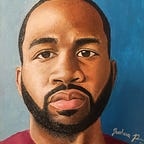First-Come-First-Served: How One Public Bike Room Can Support So Many
A typical Oonee includes between 20 to 40 parking spaces for bicycles and scooters. This may not sound like much in the world of urban planning, but with careful planning and a little math, each Oonee services an entire community of riders.
Philosophy
Here in the US, cycling is a far more episodic mode of transport than other major modes of commuting. Frequent cycling commuters use their bikes a few times a week, while others cycle less than twice a week.
Many factors influence the frequency that a commuter might choose to ride. Some may be adverse to wet weather, while others may only commute during warmer months. One rider may not want to sweat in their nice clothes, while another may not be able to mount a large cargo load on their bikes. Sometimes folks are just not in the mood and simply choose another commuting method.
Whatever the reason, an Oonee with 20 secure cycle spaces, can reliably serve a population of riders that triples that number. With the right balance, each Oonee can provide a needed amenity to the maximum number of people, while assuring that each user can be reasonably confident that they’ll find a space when they arrive.
Our underlying goal is to maximize usage at each Oonee, especially those in public right-of-way.
How we determine the maximum capacity for each Oonee
When cyclists sign up, we ask them a series of questions designed to determine the likely carrying capacity of the pod. These questions span from the type of user they plan to be (residential vs commuter) to their riding habits.
Once a new location is launched, we gradually invite a select number of users to the new Oonee and monitor their usage on a daily basis. Once a baseline is established, those on our waitlist are given provisional memberships until maximum capacity is reached. Provisional members may occasionally be moved back to the waitlist during peak cycling periods (typically during the warmer months).
This low-tech approach allows each Oonee to serve an entire community of riders.
What this means for the typical user
The typical user will not notice a difference, they’ll be more than able to find a space for their bicycle or scooter on the average day. During some peak times, a few users may have to find parking elsewhere. These peak times will most likely occur during dry, warmer weather when more people tend to ride bicycles.
For the Future
We’re working on smarter technology that will enable us to monitor the capacity of each pod in real time via self-locking cycle racks and a proprietary mobile app.
Stay tuned!
